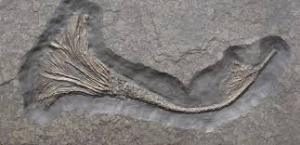
During the dig, visitors will be able to get up close in order to watch from a specially designed observation platform as the team searches for bones at the paleontologically significant site. Buckets of sediment and prehistoric animal remains will be hauled to the platform from the dig area, allowing travelers to see in real-time exactly what the team discovers during the dig. Information on Indiana Caverns is found at IndianaCaverns.com, with complete area travel information and a free visitors guide available at thisisIndiana.org or (888) 738-2137.
“This groundbreaking fieldwork being conducted by Indiana State Museum and Historic Sites experts offers our guests an extraordinary opportunity to be there and watch as history is being discovered,” said Harrison County Convention & Visitors Bureau Executive Director Jeremy Yackle.
In 2014, museum staff conducted a dig at Indiana Caverns, discovering five times more bones than they expected hidden in the depths and crevices of the cave for more than 40,000 years. This major discovery included skeletons of peccary, a pig-like mammal, as well as black bear; fisher, a carnivorous feline; owl and other birds; a bison; and snakes.
“Indiana Caverns contains an extensive boneyard of buried Pleistocene-era animals and will likely give rise to the discovery of new and rare Ice Age remains in the region,” said Ron Richards, senior research curator of paleobiology at the Indiana State Museum and Historic Sites.
Richards added that he is confident he and his team will recover many more peccary skeletons. The group will also be straining sediment in search of smaller animals and remains. Such findings may offer clues to the environmental conditions when these prehistoric animals perished in the cavern. The team could potentially find bones from other animals, such as dire wolves.
“Indiana Caverns is thrilled to offer this opportunity for our visitors,” said Indiana Caverns Partner Rob Houchens. “Our collaboration with Indiana State Museum and Historic Sites shows how public expertise and private resources can work together for the greater good of scientific discovery. This is a unique opportunity for our guests to watch as history is being discovered.”



